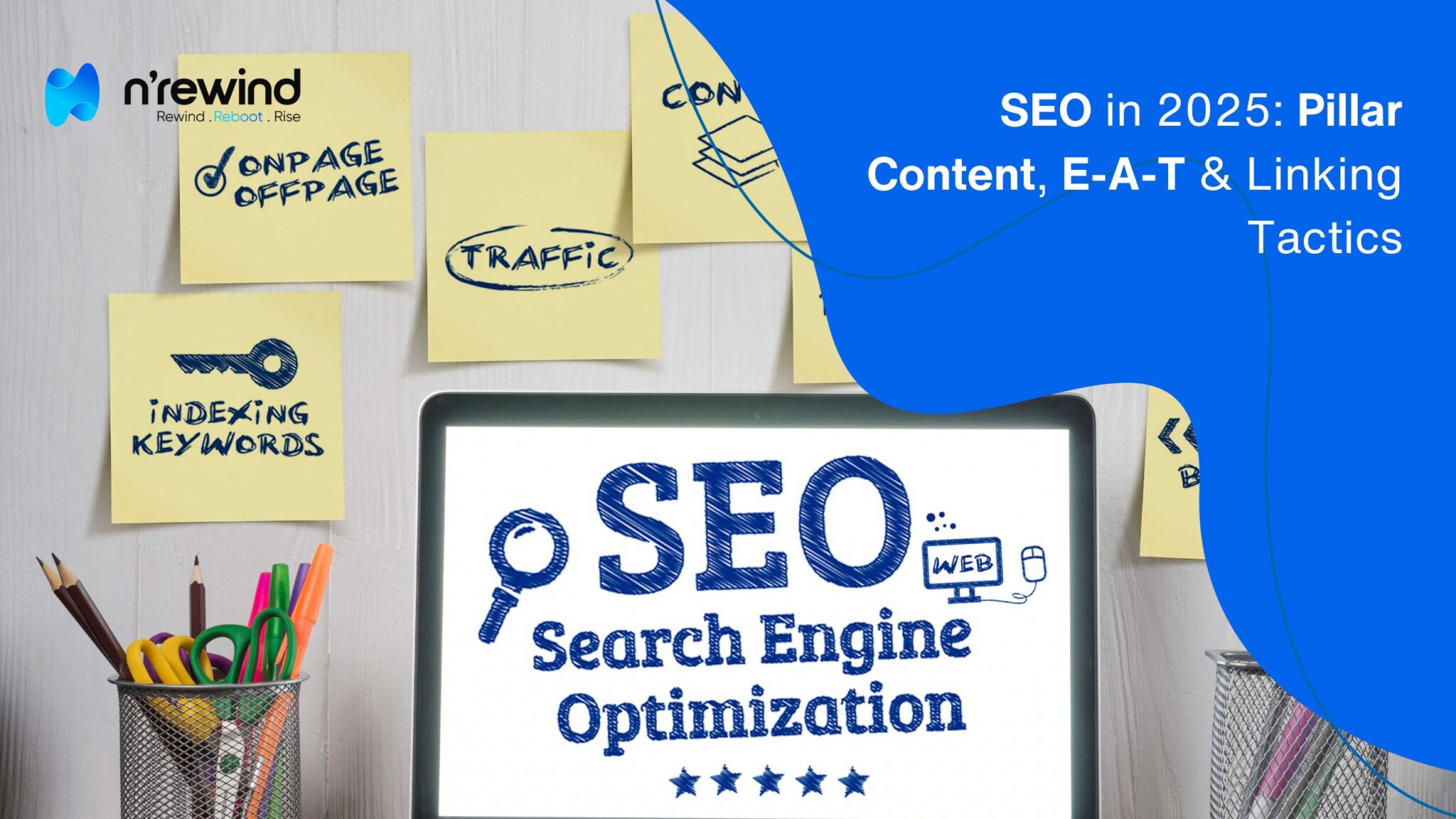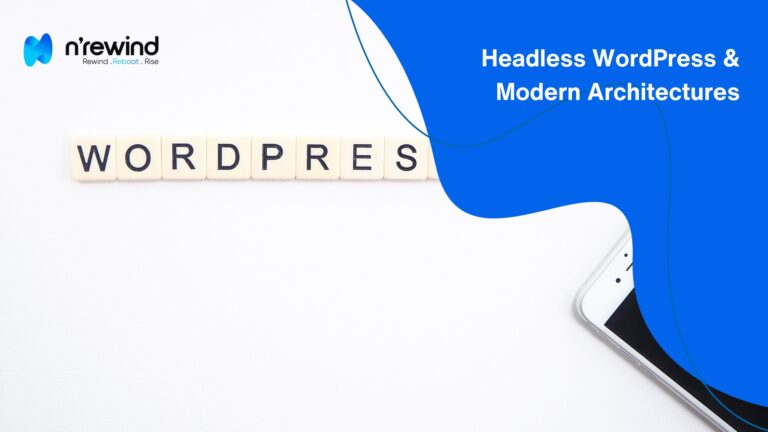Introduction
In 2025, SEO strategies are evolving rapidly as search engines prioritize contextual relevance, user experience, and E-A-T signals over traditional ranking factors. Businesses can no longer rely on simple keyword stuffing or random backlinks; instead, they must build pillar content frameworks that establish authority and trust. A strong home combined with strategic service pages creates a seamless user journey that both search engines and audiences value.
To stay competitive, websites need high-quality content, smart internal linking, and a balanced mix of technical SEO and content marketing. Integrating services like website designing or WordPress development into blogs through natural references strengthens topical authority. This approach not only improves ranking but also helps convert visitors into leads, which is the ultimate goal of SEO in 2025.
The Shift in SEO Landscape by 2025
The SEO landscape has undergone a significant transformation with AI-driven algorithms and answer-focused searches. Today, Google and other platforms prioritize websites that deliver comprehensive, well-structured content rather than fragmented pages. This shift emphasizes the importance of pillar content strategies where service pages and blogs are connected in a meaningful way to improve discoverability.
For instance, connecting resources with website development ensures that users find the right solutions without friction. Similarly, businesses investing in digital marketing can see how internal linking creates a content ecosystem. In this new SEO environment, success depends on how well brands align their content strategy with search intent.
Why Pillar Content Matters in 2025
Pillar content has become the backbone of digital visibility. It provides a comprehensive overview of a subject and links out to topic clusters that explore subtopics in detail. This helps search engines understand the breadth of your expertise, positioning your site as an authority in your niche. The more structured your pillar pages, the higher your chances of dominating search results.
A well-designed pillar page can integrate graphic designing as part of digital branding discussions or highlight mobile app development in the context of user experience. These links enrich the narrative without overwhelming the reader, while also directing traffic toward high-value service offerings.
Building High-Authority Topic Clusters
Topic clusters ensure that your website maintains a logical structure where each supporting blog links back to the main pillar page. This model signals search engines that you provide depth and authority on a subject. By grouping related content under clusters, businesses improve crawlability, user engagement, and conversion paths.
- Create a pillar page with a broad theme
- Develop supporting articles covering subtopics in depth
- Interlink clusters with relevant service pages
- Ensure every cluster links back to the pillar page
When executed well, this model provides readers with an intuitive flow of information. For example, an article about digital branding could link naturally to website designing, while a piece on content optimization might highlight digital marketing.
E-A-T and Why It Dominates Rankings
Expertise, Authoritativeness, and Trustworthiness (E-A-T) have become crucial ranking signals. Search engines evaluate whether your content is written by experts, backed by credible references, and supported by strong user signals. Without E-A-T, even well-optimized content struggles to rank.
Websites can showcase expertise by linking to real business services like WordPress development or providing case studies around mobile app development. Such references build confidence in both users and algorithms, proving that your website offers genuine solutions and not just theoretical advice.
Answer Engine Optimization (AEO) in 2025
The rise of voice search and AI assistants has made Answer Engine Optimization (AEO) a necessity. Users expect direct, concise answers to their queries, often in conversational formats. This makes it essential for businesses to structure their content in a way that satisfies these AI-powered systems.
A blog optimized for AEO may include conversational answers while linking to key services like digital marketing or encouraging readers to connect through the contact. These connections make content actionable, guiding users from curiosity to conversion seamlessly.
Internal Linking: The Game-Changer
Internal linking is one of the most effective yet underused SEO tactics in 2025. It guides both users and search engines across the website, distributing authority while improving engagement. A well-linked structure ensures that no page is isolated, creating a flow of relevance and value across the site.
For example, a blog discussing user experience could connect to graphic designing for design solutions or direct readers to the home for exploring the brand further. These small but strategic internal links keep users engaged while boosting page authority distribution.
External Linking and Authority Building
While internal linking is essential, external linking also builds credibility. Outbound links to high-authority websites show that your content is well-researched and trustworthy. However, balance is key-excessive external links can divert traffic away from your site.
Integrating service-based references like website development or highlighting marketing strategies through digital marketing helps strike that balance. By combining trusted external resources with internal links, businesses build a reliable content ecosystem.
User Experience as an SEO Ranking Factor
User Experience (UX) has officially become a ranking factor in 2025. Search engines measure metrics like dwell time, bounce rate, and navigation ease to evaluate whether users find your website valuable. A clean, engaging interface directly impacts rankings and conversions.
Good UX design often ties into strong website designing practices, while functional interfaces benefit from mobile app development. When paired with a smooth home navigation, businesses achieve both higher rankings and improved customer retention.
The Role of AI in SEO
AI has become a powerful ally in optimizing SEO strategies. From predictive analytics to content automation, AI tools help marketers understand intent, craft better content, and adapt faster to algorithm updates. This ensures that businesses remain relevant in a highly competitive digital space.
For instance, AI insights can refine strategies for WordPress development websites or identify performance gaps in digital marketing. Businesses that combine AI with human creativity will continue to dominate search rankings in 2025.
Measuring SEO Success in 2025
Tracking performance has grown beyond simple keyword rankings. Metrics like search intent satisfaction, engagement rate, and conversion pathways are now more important. Marketers must evaluate how each page contributes to the overall journey rather than focusing only on traffic numbers.
- Measure conversion flow from pillar content to service pages
- Track user interactions with navigation menus and CTAs
- Evaluate topic cluster performance through impressions and clicks
- Analyze internal link efficiency for authority distribution
By monitoring how well content drives leads through contact forms or supports graphic designing and branding efforts, businesses gain a realistic picture of their SEO ROI.
Conclusion
SEO in 2025 is no longer about shortcuts; it’s about building sustainable ecosystems through pillar content, E-A-T, and linking strategies. Businesses that create value-driven content supported by structured topic clusters and strategic linking will naturally earn authority.
The future belongs to websites that merge technical optimization with engaging storytelling. By connecting essential services such as website development and digital marketing, and ensuring a smooth experience via the home, businesses can secure lasting visibility in search engines.
"Building a strong SEO strategy in 2025 isn’t about chasing quick wins, but about creating pillar content that drives authority, applying E-A-T principles for trust, and using smart internal linking to connect your ecosystem. With NRewind’s proven expertise, your digital presence becomes more than just visible-it becomes powerful, credible, and built for long-term growth."




